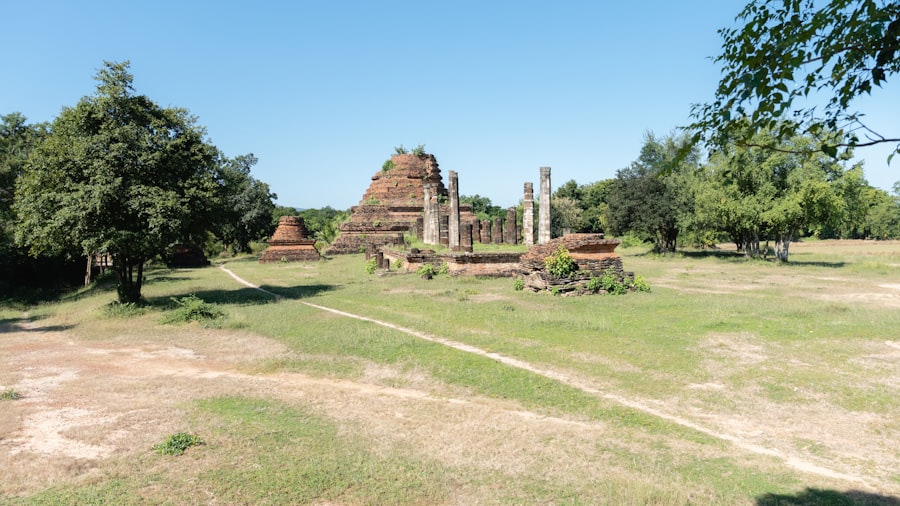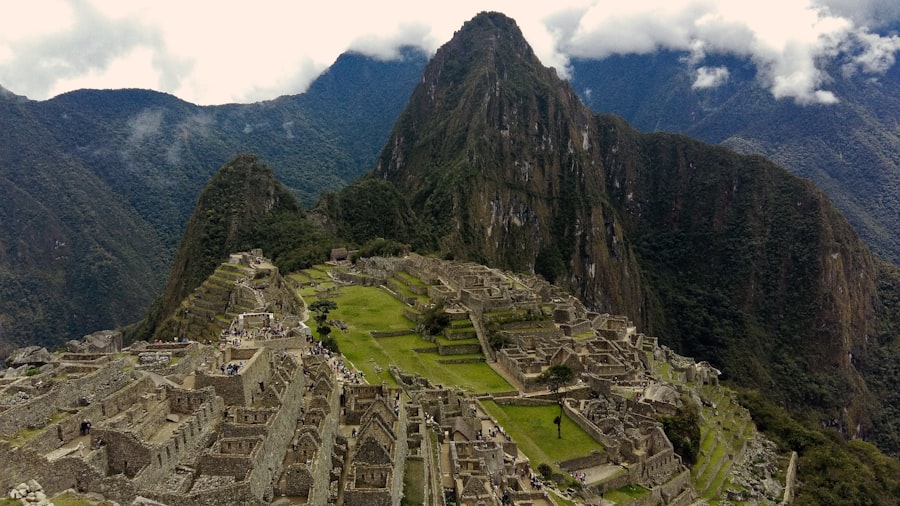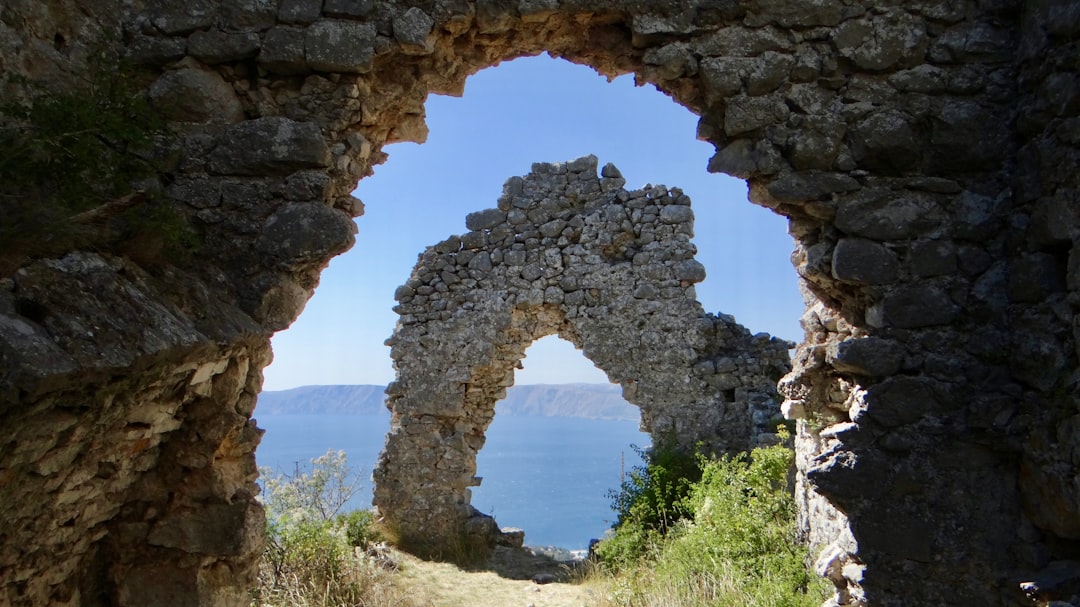The Grand Canyon, a breathtaking natural wonder carved by the Colorado River over millions of years, is not only a marvel of geological formations but also a treasure trove of ancient history. Stretching approximately 277 miles in length and reaching depths of over a mile, this iconic landmark attracts millions of visitors each year, eager to witness its stunning vistas and unique ecosystems. However, beyond its awe-inspiring landscapes lies a rich tapestry of human history, with ancient ruins that tell the stories of the indigenous peoples who once inhabited this majestic region.
The ancient ruins scattered throughout the Grand Canyon serve as a testament to the resilience and ingenuity of the Native American tribes that have called this area home for centuries. From cliff dwellings to ceremonial sites, these remnants of past civilizations offer a glimpse into the lives, cultures, and spiritual beliefs of those who lived in harmony with the land. As explorers venture into this vast wilderness, they are not only drawn to its natural beauty but also to the profound historical significance embedded within its ancient structures.
Key Takeaways
- The Grand Canyon is home to ancient ruins that hold great historical and cultural significance.
- The history of ancient ruins in the Grand Canyon dates back thousands of years and reflects the lives of the indigenous people who once inhabited the area.
- Exploring ancient ruins in the Grand Canyon is important for understanding the region’s rich history and preserving its cultural heritage.
- Proper tools and equipment, such as sturdy footwear, water, and navigation aids, are essential for safely exploring ancient ruins in the Grand Canyon.
- Safety precautions, including staying hydrated, watching for wildlife, and being mindful of unstable structures, are crucial when exploring ancient ruins in the Grand Canyon.
History of the Ancient Ruins in the Grand Canyon
The history of the ancient ruins in the Grand Canyon is deeply intertwined with the narratives of various Native American tribes, including the Havasupai, Hopi, Navajo, and Zuni. Archaeological evidence suggests that human habitation in the region dates back over 12,000 years, with these early inhabitants leaving behind artifacts that provide insight into their daily lives and cultural practices. The Ancestral Puebloans, known for their sophisticated agricultural techniques and intricate pottery, were among the first to establish permanent settlements in the canyon.
As time progressed, these early communities evolved, adapting to the harsh desert environment while developing rich spiritual traditions. The construction of cliff dwellings and ceremonial kivas reflects their architectural prowess and deep connection to the land. The ruins found within the Grand Canyon are not merely remnants of structures; they are sacred sites that hold immense cultural significance for contemporary Native American tribes.
Understanding this history is crucial for anyone seeking to explore these ancient ruins, as it fosters a deeper appreciation for the heritage and traditions that continue to thrive in the region.
Importance of Exploring Ancient Ruins in the Grand Canyon

Exploring the ancient ruins in the Grand Canyon is not just an adventure; it is an opportunity to connect with history on a profound level. These sites serve as a bridge between past and present, allowing visitors to gain insight into the lives of those who once inhabited this rugged landscape. By walking among these ruins, individuals can reflect on the resilience of human spirit and the enduring connection between people and their environment.
Moreover, exploring these ancient sites fosters a sense of stewardship and responsibility towards preserving cultural heritage. As visitors engage with the history embedded in these ruins, they become advocates for protecting these sacred spaces from degradation and destruction. The act of exploration transforms into a commitment to honor and respect the traditions of indigenous peoples, ensuring that future generations can also experience the rich tapestry of history that the Grand Canyon has to offer.
Tools and Equipment Needed for Exploring Ancient Ruins
| Item | Description |
|---|---|
| Backpack | A sturdy backpack to carry essential items |
| Flashlight | For exploring dark areas and caves |
| Map and Compass | To navigate through the ruins |
| Camera | To document findings and discoveries |
| First Aid Kit | For emergencies and minor injuries |
| Water Bottle | To stay hydrated during exploration |
| Hammer and Chisel | For delicate excavation work |
| Brushes and Trowels | To carefully clean and uncover artifacts |
When embarking on an exploration of ancient ruins in the Grand Canyon, having the right tools and equipment is essential for both safety and enjoyment. A sturdy pair of hiking boots is crucial for navigating uneven terrain and rocky paths. Comfortable clothing that can withstand varying weather conditions will enhance the experience, allowing explorers to focus on their surroundings rather than discomfort.
In addition to appropriate footwear and clothing, carrying a reliable backpack equipped with essentials is advisable. Water is paramount in this arid environment; staying hydrated is vital for maintaining energy levels during hikes. A first-aid kit should also be included to address any minor injuries that may occur along the way.
For those interested in documenting their journey, a camera or smartphone can capture the beauty of both the landscape and ancient structures. Binoculars may also enhance the experience by allowing explorers to observe distant ruins or wildlife without disturbing their natural habitat.
Safety Precautions for Exploring Ancient Ruins in the Grand Canyon
Safety should always be a top priority when exploring ancient ruins in the Grand Canyon. The rugged terrain can pose various challenges, from steep cliffs to loose rocks, making it essential for explorers to remain vigilant at all times. It is advisable to stay on marked trails and avoid venturing too close to cliff edges, as falls can result in serious injuries or fatalities.
Additionally, understanding weather patterns is crucial for ensuring a safe exploration experience. The Grand Canyon can experience sudden changes in weather, including intense heat during summer months or unexpected rainstorms that can lead to flash flooding. Checking weather forecasts before embarking on a hike can help adventurers prepare adequately.
Furthermore, it is wise to inform someone about planned routes and expected return times, especially when exploring remote areas where cell service may be limited.
Best Times of Year to Explore Ancient Ruins in the Grand Canyon

The Grand Canyon offers unique experiences throughout the year, but certain seasons are particularly favorable for exploring its ancient ruins. Spring and fall are often considered ideal times due to milder temperatures and lower visitor traffic. During these seasons, hikers can enjoy comfortable weather while immersing themselves in the stunning landscapes adorned with blooming wildflowers or vibrant autumn foliage.
Summer brings warmer temperatures that can be challenging for outdoor activities, especially in lower elevations where heat can become oppressive. However, early mornings or late afternoons can provide opportunities for exploration before temperatures peak. Winter presents its own charm, with fewer crowds and a serene atmosphere; however, visitors should be prepared for colder conditions and potential snow at higher elevations.
Ultimately, choosing the best time to explore depends on personal preferences and tolerance for varying weather conditions.
Guided Tours and Excursions for Exploring Ancient Ruins
For those seeking a more structured approach to exploring ancient ruins in the Grand Canyon, guided tours and excursions offer valuable insights and expertise. Knowledgeable guides provide context about the historical significance of various sites while ensuring that visitors navigate safely through rugged terrain. These tours often include transportation, making it easier for participants to access remote areas that may be challenging to reach independently.
Engaging with local guides allows visitors to gain a deeper understanding of the stories behind each ruin, enriching their experience beyond mere observation. Additionally, participating in guided tours fosters a sense of community among fellow explorers who share a passion for history and adventure.
How to Respect and Preserve Ancient Ruins in the Grand Canyon
Respecting and preserving ancient ruins in the Grand Canyon is paramount for ensuring their survival for future generations. Visitors should adhere to established guidelines that promote responsible exploration practices. This includes refraining from climbing on or defacing structures, as even minor actions can cause irreversible damage over time.
Moreover, it is essential to leave no trace during visits; this means packing out all trash and minimizing environmental impact. Engaging with local Native American communities can also provide valuable insights into culturally appropriate behaviors when visiting sacred sites. By fostering an attitude of respect and stewardship, explorers contribute to preserving these ancient ruins as vital links to human history.
Notable Ancient Ruins to Explore in the Grand Canyon
Among the many ancient ruins scattered throughout the Grand Canyon, several notable sites stand out for their historical significance and accessibility. One such site is Tusayan Ruin and Museum, located near the South Rim. This archaeological site features well-preserved remains of Ancestral Puebloan dwellings along with informative exhibits that delve into the lives of its former inhabitants.
Another remarkable site is the Nankoweap Granaries, perched high on a cliffside overlooking the Colorado River. These granaries served as storage facilities for crops cultivated by early inhabitants and offer breathtaking views of the canyon below. Exploring these ruins provides not only an opportunity to witness architectural ingenuity but also a chance to reflect on the agricultural practices that sustained ancient communities.
Tips for Photographing Ancient Ruins in the Grand Canyon
Capturing the beauty of ancient ruins within the Grand Canyon requires thoughtful consideration of both composition and lighting. Early morning or late afternoon light often provides soft illumination that enhances textures and colors while avoiding harsh shadows. Utilizing natural frames such as trees or rock formations can add depth to photographs while drawing attention to specific elements within each scene.
Additionally, being mindful of perspectives can create compelling images that convey a sense of scale and context. Experimenting with different angles allows photographers to showcase both intricate details of ruins and their relationship with surrounding landscapes. Lastly, patience is key; waiting for optimal lighting conditions or unique moments can result in stunning photographs that tell powerful stories about these ancient sites.
The Impact of Exploring Ancient Ruins in the Grand Canyon
Exploring ancient ruins in the Grand Canyon offers an enriching experience that transcends mere sightseeing; it invites individuals to engage with history on a personal level while fostering respect for cultural heritage. As visitors traverse this remarkable landscape, they become part of an ongoing narrative that honors those who came before them—an acknowledgment of resilience, creativity, and connection to place. The impact of such explorations extends beyond individual experiences; it cultivates awareness about preservation efforts necessary for safeguarding these sacred sites against modern threats.
By embracing responsible exploration practices and advocating for cultural respect, adventurers contribute meaningfully to ensuring that future generations can continue to discover and appreciate the profound stories woven into every stone within this iconic canyon.
The Grand Canyon is not only a breathtaking natural wonder but also a site of historical intrigue, with ancient ruins that continue to captivate archaeologists and historians alike. These ruins, believed to be remnants of ancient civilizations, offer a glimpse into the lives of the people who once inhabited this majestic landscape. For those interested in exploring more about the mysteries surrounding these ancient sites, an article on X File Findings delves into the fascinating discoveries and theories about the ancient ruins in the Grand Canyon. This resource provides a comprehensive look at the ongoing research and the enigmatic history of this iconic location.
WATCH THIS! 👺 The Grand Canyon Cover-Up: Did the Smithsonian Hide Evidence of Giants?
FAQs
What are the ancient ruins in the Grand Canyon?
The ancient ruins in the Grand Canyon are remnants of dwellings and structures built by the Ancestral Puebloans, also known as the Anasazi, who inhabited the area over a thousand years ago.
Where are the ancient ruins located in the Grand Canyon?
The ancient ruins can be found in various locations within the Grand Canyon, including along the Colorado River and its tributaries, as well as on the canyon rims.
What do the ancient ruins in the Grand Canyon look like?
The ancient ruins in the Grand Canyon can vary in appearance, but they often consist of stone and adobe structures, including cliff dwellings, granaries, and petroglyphs.
How old are the ancient ruins in the Grand Canyon?
The ancient ruins in the Grand Canyon date back to around 500-1200 AD, during the time when the Ancestral Puebloans inhabited the region.
Are the ancient ruins in the Grand Canyon open to the public?
Some of the ancient ruins in the Grand Canyon are accessible to the public, while others are located in remote or protected areas and may require special permits or guided tours to visit.
What is the significance of the ancient ruins in the Grand Canyon?
The ancient ruins in the Grand Canyon provide valuable insights into the history and culture of the Ancestral Puebloans, including their architectural techniques, daily life, and relationship with the natural environment.
